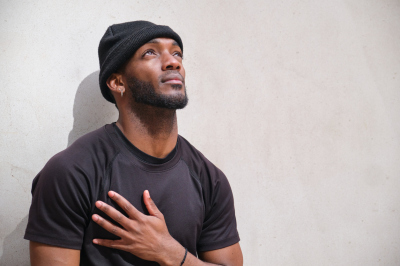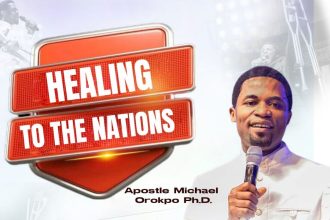
In the Bible, we read about Stephen, an early follower of Jesus Christ. The religious leaders of the day hated him for it. He would not be silenced and was stoned to death on account of his faith. I believe Scripture depicts Stephen’s NDA and the merging of two worlds:
“[Stephen], being full of the Holy Spirit, gazed into heaven and saw the glory of God, and Jesus standing at the right hand of God, and said, ‘Look! I see the heavens opened and the Son of Man standing at the right hand of God!’”
“Then [the leaders] cried out with a loud voice, stopped their ears, and ran at him with one accord; and they cast him out of the city and stoned him. And the witnesses laid down their clothes at the feet of a young man named Saul. And they stoned Stephen as he was calling on God and saying, ‘Lord Jesus, receive my spirit.’ Then he knelt down and cried out with a loud voice, ‘Lord, do not charge them with this sin.’ And when he had said this, he fell asleep” (Acts 7:55–60).
Whether you are the patient or the family member reading this Scripture passage, how does it make you feel? Stephen didn’t have an opportunity to develop his unique list of “comfort me” statements. And for some of us, our deaths will also arrive suddenly. But God, in his mercy, was Stephen’s comforter by revealing the heaven he anticipated and would enter on that day. God can be our comforter when we trust in him.
I have discovered that regardless of hospital or setting, God always has a remnant of his praying people who work in such settings. Ask for them at the hospital, as it is your right. You may ask for a Christian Chaplain, other Christian services of volunteers that pray, or if there are doctors or nurses who pray for their patients and families. The latter question may be greeted with a blank stare or a genuine answer. Don’t let the potential stare keep you from finding the spiritual care. Those working in places where life and death collide on a frequent basis often have profound faith. Even when you don’t ask, they are praying.
Regardless of health condition, having a call tree and prayer tree is wise. This prepares you for the expected and unexpected. It is especially crucial if you or your loved one has a serious or terminal diagnosis. A call and prayer tree are created in the same manner and may be one and the same depending on your circumstances.
- Considering a crisis, designate one person whom you trust to be the person you or your loved one calls. Designate another person as a backup in the event your primary person is unreachable.
- That person will notify the next two people in your tree, and they will each notify the next two people and so forth. The concept is to identify the fastest way to relay information and to have people praying in an emergency.
- This system also works to notify those with predetermined roles that they have been activated. For example, one person may notify family, another person may notify schools or employers, and someone else may take care of pets. All of this is initiated with just one call from someone who is with the patient.
- This same method of relaying information helps you as the patient or you as the loved one to focus on what is happening in the clinical setting rather than on making multiple calls.
God’s sovereign care exists even in times when we suffer greatly. Though we grieve our circumstances, we can trust our Father God, who walks with us through them.
We’ve talked about preparing minds, hearts, and practical matters as we anticipate the end of life on earth and the beginning of life in heaven. Now let us focus on preparing the soul to go home. The most basic way to do this is through prayer.
Prayer is a powerful gift when we need it most. Suffering may bring us to our knees in prayer. But prayer is also a spiritual practice that benefits us in the absence of a crisis, medical or otherwise. How do we develop a vibrant prayer life?
- Commit to prayer as a practice.
- Create a consistent time and place for prayer.
- Consider prayer a sacred time of communication with the Creator.
- Communicate bidirectional; prayer, as with conversations, should also be bidirectional. Give praise, give petition, give gratitude, and then listen. I struggle with the listening. My brain becomes a pinball machine each time I try to keep
it still. But with time, I am learning. Remember, this is a practice.
- Call upon the Lord when discernment is needed.
- Cry out to the Lord in times of brokenness.
- Contemplate what Jesus said about how to pray:
Our Father in heaven, Hallowed be Your name.
Your kingdom come. Your will be done
On earth as it is in heaven.
Give us this day our daily bread.
And forgive us our debts,
As we forgive our debtors.
And do not lead us into temptation,
But deliver us from the evil one.
For Yours is the kingdom and the power and the glory forever.
Amen. (Matthew 6:9–13)
- Concede that not all prayers are not answered in the manner we asked for. If this were true, wouldn’t the prayers of a faith-filled child be answered always? Wouldn’t the lives of the young be spared based on potential and merit? Jesus revealed this to us in His prayer in the garden of Gethsemane:
“’Father, if it is Your will, take this cup away from Me; neverthe- less not My will, but Yours, be done.’ Then an angel appeared to Him from heaven, strengthening Him. And being in agony, He prayed more earnestly. Then His sweat became like great drops of blood falling down to the ground” (Luke 22:42–44).
The last point is vital to understand. Jesus prayed for a different path to fulfill God’s plan. He was strengthened by an angel and still “prayed more earnestly” and his sweat became like drops of blood — actually, great drops of blood. His anguish in knowing He would suffer the Father’s wrath for the first time reveals His humanity. His unanswered prayer ultimately revealed a gift to humanity that can never be surpassed.
Dr. Pamela Prince Pyle is a Board-Certified Internal Medicine physician who studied at Oklahoma State University, North Texas Health Science Center, and completed her training at Baylor University in Houston. She was one of three physicians selected in 1992 by Carolina Health Specialists (CHS) to begin the first hospital-based internal medicine practice outside of a university setting in the United States.








